
Want to learn how to increase customer satisfaction survey scores? There’s no great mystery here. Just hard work.
We’ll show you exactly how we accomplished this…
…And we can do it in 2,000 words.
In September 2017, Semify introduced a Net Promoter Score survey.
The initial scores were… not ideal.
For a company that prides itself on customer service, these scores were BAD.
In that first month, our NPS score came in at a dismal 10 out of 100.
That was a tough truth to face, but it motivated us.
These scores forced us to find the weak spots in our customer service. They required us to listen – really listen – to our customers. They pushed us to innovate based on that feedback. And after implementing some new customer service strategies, we saw our NPS scores rise to “world-class” levels.
In October 2018, our NPS score reached 81 – an agency record. For the last four out of five months in 2021, we exceeded the 70-score mark, indicating our world-class customer service and our commitment to grow together are here to stay.
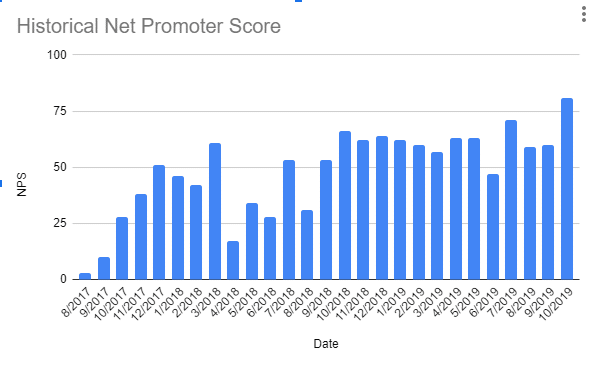
In this post, we’ll show you exactly how to increase customer satisfaction survey scores. Using the customer service strategies outlined here, Semify moved its NPS scores from “mediocre” to “world-class.” We truly believe any company can see the same results.
4 Simple Steps You Will Learn
- Measure Customer Satisfaction Consistently
- Use NPS Surveys Correctly
- Focus on Company Culture
- Create An Action Plan For Responding To Bad Survey Scores
Case Studies in this Article
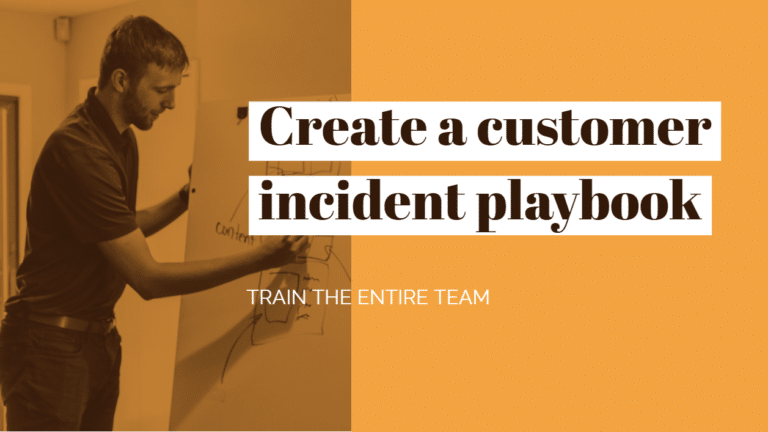
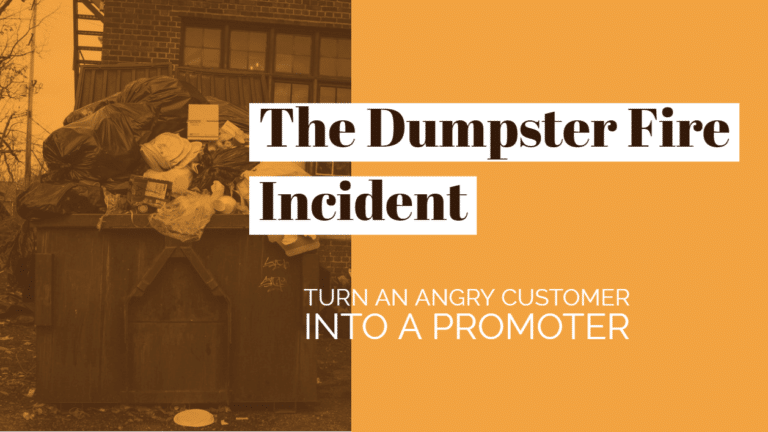
How to Increase Customer Satisfaction Survey Scores
Before you try anything new, you have to measure customer satisfaction consistently.
When you receive a bad survey score, your account managers should call that customer for feedback the very same day.
Train your employees to practice active listening during these feedback sessions. We’re huge fans of Julian Treasure’s work, which can help your team learn how to “RASA.”
Once you’ve documented the feedback from your customer, ask a simple question: “How can we get a better score on the next survey?”
To increase your customer satisfaction survey scores, you can also follow our proven formula, outlined below:

1. Measure Consistently
How do you measure customer satisfaction?
You want your customers to be happy.
Because, unless you own an airline, it’s hard to stay in business without happy customers.
But do you know exactly how happy your customers really are?
To translate this feeling into measurable numbers, most successful companies utilize customer satisfaction surveys.
Your company might even measure customer satisfaction in several different areas.
Here at Semify, we measure customer satisfaction with our software, our onsite content, and our customer experience as a whole.
Here’s HubSpot’s definition of Customer Satisfaction:
Customer satisfaction (CSAT) is a metric used to quantify the degree to which a customer is happy with a product, service, or experience. This metric is usually calculated by deploying a customer satisfaction survey that asks on a five or seven-point scale how a customer feels about a support interaction, purchase, or overall customer experience, with answers between “highly unsatisfied” and “highly satisfied” to choose from.
HubSpot research shows that growing businesses are more likely to prioritize their customer satisfaction scores than organizations that have stagnant or decreasing revenue.
Additionally, happy customers can become your organization’s best salespeople; the same research shows that 77% of people have shared positive customer experiences in the past year.
While the traditional customer satisfaction survey has its uses, more companies are adopting the Net Promoter Score as a tool to measure CSAT.

2. Use NPS Correctly
What is a Net Promoter Score (NPS)?
The Net Promoter Score (NPS) and its metrics are a proven tool for measuring customer loyalty.
It’s a nationally recognized survey. NPS helps organizations gauge how loyal their customers are by sending out short, two-minute surveys.
Forget the long, convoluted surveys of the past. Your Net Promoter Score can be based on a single question:
“On a scale of 0 to 10, how likely is it that you would recommend [insert your organization’s name] to your friends, family, or business associates?”
Customers who give your company a score of 9 or 10 are considered your “Promoters.”
Those who give you a 7 or 8 are known as “Passives,” while those who give you a 6 or below are called “Detractors.”
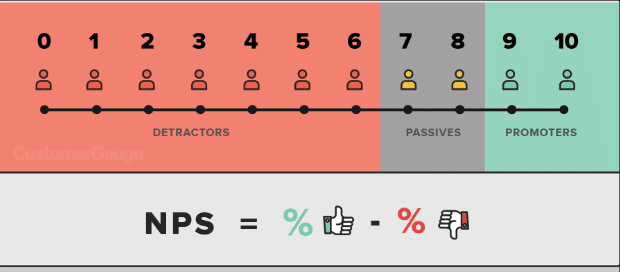
To calculate your Net Promoter Score, detract the percentages of Detractors from the percentage of Promoters.
For example, if 60% of your respondents were Promoters and 10% were Detractors, then your NPS score is 50.
So why is that important to you?
- Your NPS will give you insight into your customer’s loyalty spectrum.
- You’ll be able to see how retention improves as your move up the scale.
- Happier customers also end up spending more and spread positive word of mouth for your business.
Once you start measuring your NPS, you can find out which of your customers are Promoters, Passives, and Detractors.
This is vital information for your organization. You would be wise to get feedback from all of your customers based on their survey scores.
You should:
Ask your Promoters why they’re giving you such high scores.
AND
Ask your Passives what you can do better.
But the feedback from your Detractors is especially critical.
They’ll tell you why they would not recommend you to their friends, family, or business associates. Pay special attention to their feedback so you can start to make changes to your products and services.
These changes can turn Detractors into Passives, and then Passives into Promoters.
Remember, happy customers become your best salespeople.

3. Focus on Culture
To learn how to increase customer satisfaction survey scores, you’ll want to focus on your company’s culture.
If you want your customers to be happy, then you need your team members to be happy, too.
You might be thinking, “How can making my employees happy help with my customer satisfaction scores?”
Well, when your employees are happy, they’ll provide better service to your customers.
Study after study has proven that employees perform better when they feel appreciated. If your employees can take pride in their work, then their engagement with customers will improve dramatically.
How did Semify increase its customer satisfaction surveys?
Most business owners understand the importance of customer satisfaction in a general sense.
But how often do these business owners talk about their CSAT or NPS metrics with their employees?
If you want to learn how to increase customer satisfaction survey scores, then the first step is to talk about these results with your team.
In fact, you want to over-communicate this information.
When we decided that improving customer satisfaction would be a top priority in 2018, we made sure to talk about that goal. We talked about it a lot.
In one-on-ones, team meetings, coffee breaks, and quick standups, we talked about our NPS scores.
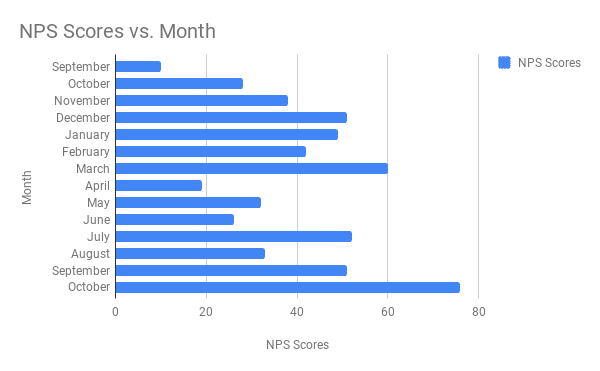
Next, we made sure we were really listening to our customers.
We made and consistently follow a playbook for responding to customer satisfaction surveys.

Whenever a customer gave us an NPS score lower than 9, we called them that same day.
During these calls, our Account Managers would practice mindful, active listening.
Sometimes, there was a specific problem on their mind – a problem that we could solve right away.
Other times, it was something much more complex. We would listen to their concerns, paraphrase their response, and share this information with the team.
We discovered that the follow-up was equally important.
We started calling every customer who gave us a score lower than 9 on our NPS surveys about a week before the next survey was due. In these calls, we wouldn’t try to be coy.
We’d be very direct:
“What do we need to do to get a better score on your next survey?”
It wasn’t a complicated process. In fact, we found that two phone calls were often all it took to improve customer satisfaction scores.
These calls gave us actionable feedback and clear insight into our customer experience. For instance, after we received feedback in a post-NPS survey call, one of our customers almost single-handedly designed one of our new dashboard screens.
There’s a simple reason this is effective.
If you don’t measure customer satisfaction and receive feedback, you won’t make the right changes to your products and services.
When writing this post, we also asked our account managers to recount some of their most memorable customer satisfaction stories. If you’re still wondering how to increase customer satisfaction survey scores, here’s how some of our account managers did it:
The Dumpster Fire Incident

Back in 2018, an upset customer called Semify a “dumpster fire.”
- Amanda, the account manager for this reseller, along with the president of the company, immediately got on the phone to hear his concerns.
- After the specific incident was resolved, the leadership team held weekly calls with this reseller to hear their complaints.
- Semify worked intensely on our relationship. We created solid agendas for the meetings and practiced active listening during the calls.
- In June 2018, this reseller gave us a 5 on the NPS survey. In August 2018, this reseller gave us a 10. Now, they’re expanding their SEO services with Semify.
- Additionally, they’ve asked for consulting on a growth strategy for their agency.
Turning a Passive Into a Promoter
This reseller gave us an NPS score of 8, stating that they wanted more proactive suggestions from Semify.
- The account manager, Andrew, identified potential projects that this reseller could pitch to their clients.
- We held regular conference calls with this reseller as they pitched these ideas and brought feedback to us from their clients.
- Based on the feedback from this reseller’s clients, we helped them massage the proposals until some of their deals closed.
- Several months later, this reseller gave us a 9 on their NPS survey, switching from a Passive to a Promoter.
The Tracking Nightmare
We built this customer a landing page but left out an important form tracking element, which resulted in lost leads. This reseller demanded a $2,000 refund and gave Semify a 3 on the NPS survey.
- During the initial incident, Semify PPC analysts showed intense urgency in responding to our mistake. We used our core value of accountability to own this mistake without making excuses.
- Semify negotiated a refund with this reseller that was based on accountability and integrity.
- The account manager actively listened to the complaints from this reseller in order to make positive changes. Our company president got on the phone repeatedly with the reseller to hear his concerns first-hand.
- On the last NPS survey this reseller took, they gave us a score of 10.
All companies make mistakes. What matters is how you respond to those mistakes.

4. Create an Action Plan
When Semify decided we wanted to learn how to increase customer satisfaction survey scores, we went looking for resources. Along the way, we’ve found some fantastic resources for further reading.
How To Increase Customer Satisfaction Survey Scores: Further Reading
One of the most essential tools we use to deal with customer issues is the “Autopsy Without Blame.” These meetings come from a book that Semify holds near and dear, Good to Great by Jim Collins. We order pizza, invite the whole company to the meeting, and talk through these mistakes without placing blame on anyone. At that point, we can all learn from the mistake and move forward, working hard to correct the mistake and grow from the experience.
Semify also relies on Listen Up or Lose Out, an incredible book written by Robert Bolton and Dorothy Grover Bolton. Thanks to this inspiring piece of literature, the team has learned the invaluable skills of active listening, reflections, and asking productive questions. Without these skills, Semify would not be able to build the relationships we have with our customers today.
Ultimately, without the proper tools to increase your customer satisfaction scores, sending out all the NPS surveys in the world won’t do you much. That being said, they are a great place to start.